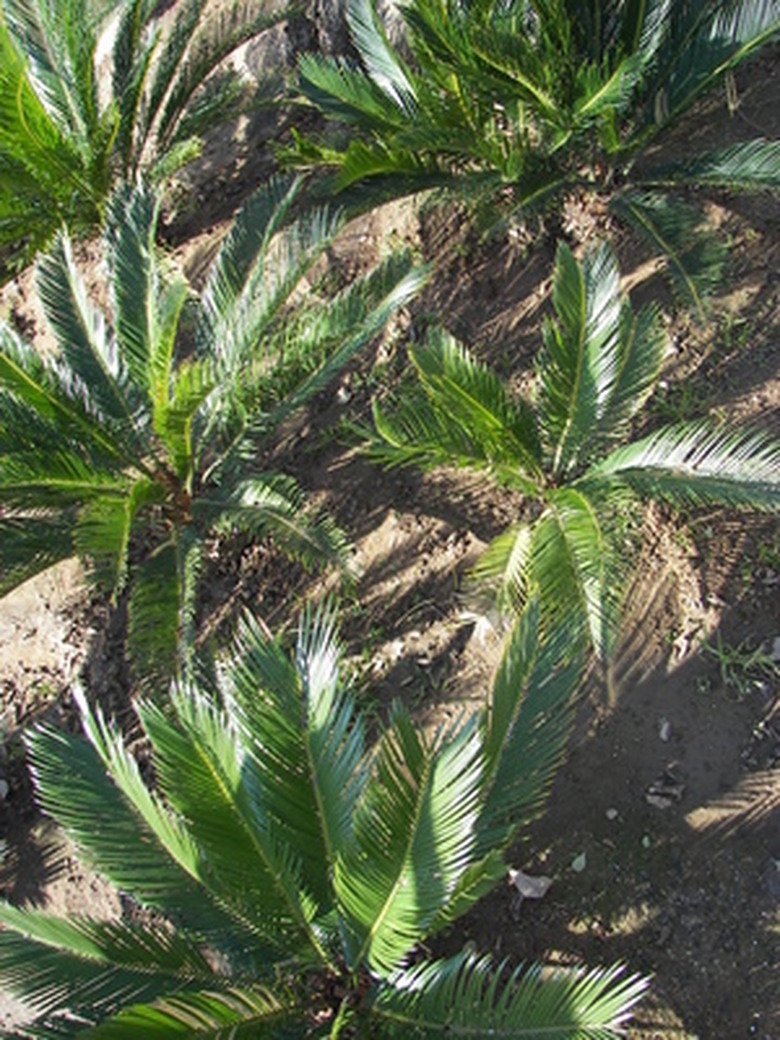List Of Sago Palm Tree Diseases
The sago palm (Cycas revoluta) is one of the oldest species of plants, having appeared on the earth about 260 million years ago, according to the Florida Museum of Natural History. The sago palm is really a cycad (an evergreen seed plant), not a palm. It has rough trunks and crowns of fern-like leaves. A sago palm averages 4 to 6 feet in height, and it will thrive in USDA Hardiness Zones 8 to 10.
Ganoderma Butt Rot
The fungus Ganoderma zonatum causes Ganoderma butt rot, which degrades part of the sago palm's trunk. Symptoms also may include wilting or general poor health. Ganoderma butt rot is spread by spores. Once the sago palm is infected, there is no cure. Any infected plants should be removed as soon as possible, and no other sago palms or any palm trees planted in that same location.
- The sago palm (Cycas revoluta) is one of the oldest species of plants, having appeared on the earth about 260 million years ago, according to the Florida Museum of Natural History.
- The fungus Ganoderma zonatum causes Ganoderma butt rot, which degrades part of the sago palm's trunk.
Frizzle Top
Frizzle top causes sagos' new leaves to become yellowed, frizzled and distorted. It is caused by a deficiency in the micronutrient manganese (Mn). It can be fixed with adequate fertilization and spraying with manganese sulfate. Have your soil tested to ensure it has the correct pH and level of nutrients. Acidic soils are often low in manganese, and powdered supplements can be added to improve conditions.
Sooty Mold
Sooty mold is caused by a variety of fungi that grow on the honeydew secretions left by small sap-sucking insects such as aphids, scale, whiteflies and mealybugs. A black, powdery covering will coat the sago's leaves. While the sooty mold does not attach itself to the leaf's surface, it can block sunlight and decrease the production of chlorophyll. A heavy infestation can lead to the sago's death. To get rid of the fungus, you will need to control the insect problem with an insecticidal soap or spray.
- Frizzle top causes sagos' new leaves to become yellowed, frizzled and distorted.
- While the sooty mold does not attach itself to the leaf's surface, it can block sunlight and decrease the production of chlorophyll.
